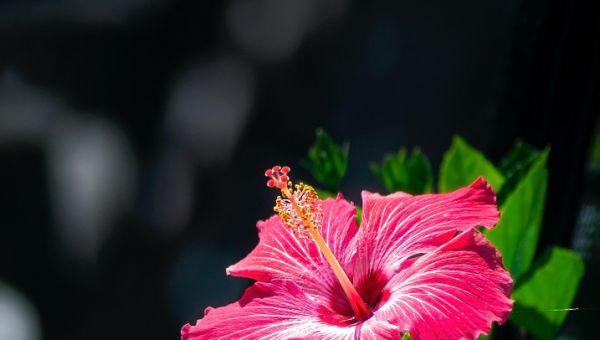In the heat of summer, a lot of people have wilting plants and dry grass everywhere, and there isn’t much colour in the garden – well there certainly isn’t in mine! Most plants struggle to stay alive in the relentless sun, let alone put out flowers.
But there are one or two that just love the heat, and one of them is Hibiscus. There are several different species – in fact, several hundred of them - different colours with different petal shapes, and are all native to warm subtropical and tropical regions of the world. They have large showy blooms and are from the mallow family, Malvaceae, and apart from plain old hibiscus, are known as rose of sharon, hardy hibiscus or tropical hibiscus. Apparently, you can even make tea from the flowers of the species roselle (not that I have ever tried it) which can be served either hot or cold. The drink is known for its red colour, tart flavour, and vitamin C content.
Hibiscus is also a popular herbal remedy in countries across the world, being used to treat anything from constipation to liver disease and cold symptoms. In Africa, pulp made from the leaves used to be applied to the skin to heal wounds.
Hibiscus can be grown in a pot, so a nice balcony plant for those without a garden, and in fact, they quite like to be a bit pot-bound.
When they are blooming they do need a lot of water but less in the cooler months, and a high potassium fertiliser is recommended once a week and a slow release fertilizer once a month in the summer to keep it in good condition, but nothing special is needed in the winter.
They can attract insect pests – and there are several culprits to look for, whitefly, thrips, mealybugs and spider mites, causing them to drop their blooms, but as the flowers only last a day anyway, you might need to have a close look now and again to check, and choose an appropriate insecticide. I have one in my garden that seemed to take forever to come into bloom this year, but a couple of sessions with a spray made up of a weak solution of dishwashing liquid and water worked well to clear the tiny bugs, and the buds formed and bloomed as normal.
As for cutting back - for the most part, hibiscus plants can be lightly pruned in late summer or early autumn but not during late autumn or winter. You can take cuttings too, just make sure you cut a 4” – 6” piece of softwood growth - usually new growth and greenish – and cut just below the last leaf node. Strip off all the leaves apart from the top ones, dip the stem in rooting hormone (available from gardencentres) and place the stem fairly deeply in well watered potting soil, then firmly move the soil around it to give it support. Top it with a plastic bag, without touching the leaves, and leave it in partial shade.
Keep the soil damp, but not wet until it is rooted, which takes around eight weeks. Once rooted, you can repot it into a bigger pot.
Be warned – it's very easy to get pollen on your clothes from hibiscus flowers, as the stamen producing the pollen extends quite a way outside the bloom, and the yellow stain is really hard to remove. Ants can also infest the inside of the flower where they harvest the sweet honeydew that aphids make from the plant sap that they ingest. They carefully farm and herd the aphids to milk them for their honeydew. So ladies – before you pluck one of these magnificent blooms and tuck it behind your ear, Hawaiian style, just check it for ants!
Marilyn writes regularly for The Portugal News, and has lived in the Algarve for some years. A dog-lover, she has lived in Ireland, UK, Bermuda and the Isle of Man.











